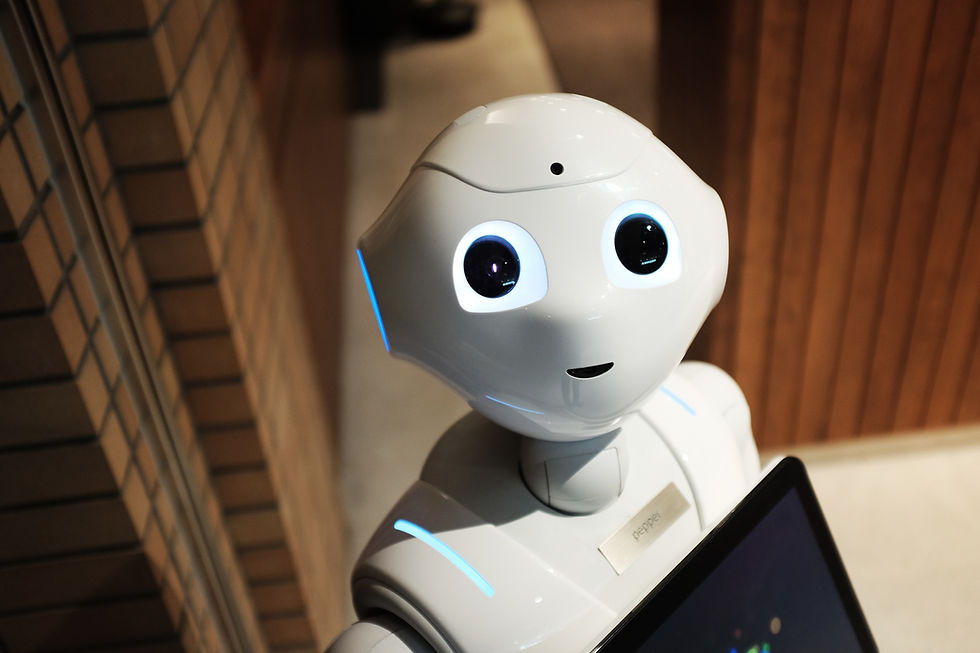The Great Transition: From Internet-Native to AI-Native Companies
- Tanya Bisht
- May 27
- 4 min read

The business world stands at the precipice of another fundamental transformation. Just as the rise of "internet companies" redefined commerce and communication in the 1990s and 2000s, we are now witnessing the emergence of AI-native organizations that will reshape the corporate landscape over the next five years.
The Internet Company Revolution
The term "internet company" emerged in the mid-1990s as entrepreneurs and investors recognized that the World Wide Web represented more than just a new communication tool—it was an entirely new business paradigm. Companies like Amazon, founded by Jeff Bezos in 1994 as an online bookstore, and eBay, launched by Pierre Omidyar in 1995 as an auction platform, demonstrated that digital-first organizations could scale rapidly and operate with fundamentally different cost structures than their traditional counterparts.
These early internet companies shared common characteristics: they leveraged network effects, operated with asset-light models, and could reach global markets from day one. The dot-com boom of the late 1990s, despite its eventual crash, established the foundation for what would become the dominant business model of the 21st century.
Software Eating the World
Marc Andreessen, co-founder of Netscape and venture capital firm Andreessen Horowitz, crystallized this transformation in his influential 2011 Wall Street Journal essay titled "Why Software Is Eating the World." Andreessen argued that software companies were not merely creating new market categories but were systematically replacing traditional industries across sectors.
His thesis proved prescient. Over the following decade, software-driven companies disrupted transportation through Uber and Lyft, hospitality through Airbnb, and retail through e-commerce platforms. Traditional media companies found themselves competing with Netflix, while established financial institutions faced challenges from fintech startups like Stripe and Square.
The "software eating the world" phenomenon represented more than technological disruption—it marked a fundamental shift toward digital-native business models that could iterate rapidly, scale efficiently, and adapt to changing market conditions with unprecedented speed.
The Dawn of AI-Native Organizations
Today, we stand at a similar inflection point. Artificial intelligence is not simply another software tool but represents a new organizational operating system. AI-native companies are emerging with structures and capabilities that differ fundamentally from their internet-era predecessors.
These organizations integrate AI agents throughout their operations, from customer service and sales to product development and strategic planning. Unlike traditional companies that retrofit AI solutions onto existing processes, AI-native organizations are built from the ground up to leverage artificial intelligence as their primary operational framework.
Several companies founded in the last two years exemplify this AI-native approach. Perplexity AI, launched in 2022, operates as an AI-powered search engine where artificial intelligence serves as the primary interface between users and information, fundamentally reimagining how search and discovery function. Character.AI, also founded in 2022 by former Google researchers, built its entire platform around AI-generated conversational experiences, creating a social network where the primary interactions occur between humans and AI personalities.
Anthropic, established in 2021 by former OpenAI researchers, represents another model of AI-native organization, designing its corporate structure around AI safety research and the development of constitutional AI systems. These companies demonstrate how AI-native organizations differ from traditional software companies by making artificial intelligence central to their value proposition rather than supplementary to existing services.
The distinction is crucial. Internet companies succeeded by digitizing existing business processes and creating new digital experiences. AI-native companies go further by embedding autonomous decision-making capabilities throughout their organizational structure, enabling them to operate with minimal human intervention in many core functions.
The Five-Year Transformation
The next five years will witness a marked transition from traditional organizational structures to AI-native architectures. This shift will be driven by several converging factors: the increasing sophistication of large language models, the declining cost of computational resources, and the growing availability of AI development tools that enable rapid deployment of intelligent agents.
AI agents will assume roles previously requiring human expertise, from conducting market research and generating content to managing supply chains and optimizing resource allocation. Companies that embrace this transition will achieve operational efficiencies and response speeds that make traditional competitors appear sluggish by comparison.
This transformation will not be gradual but will follow the same exponential adoption curve that characterized the internet revolution. Early AI-native companies will establish competitive advantages that become increasingly difficult for traditional organizations to overcome, creating a new category of market leaders defined by their intelligent, autonomous operational capabilities.
The Structural Imperative
The transition to AI-native organizations represents more than technological adoption—it requires fundamental changes in corporate structure, decision-making processes, and human resource strategies. Companies must redesign their operations around the capabilities of AI agents while maintaining human oversight for strategic direction and ethical considerations.
This transformation will create new competitive dynamics where speed of learning and adaptation becomes the primary differentiator. AI-native companies will continuously evolve their capabilities through machine learning, creating compounding advantages that traditional organizations cannot match through conventional means.
The companies that recognize and act on this transition will define the next era of business leadership. Those that delay risk finding themselves in the position of traditional retailers competing against Amazon or taxi companies facing Uber—technically functional but structurally obsolete in a rapidly evolving marketplace.
The age of AI-native organizations has begun, and the next five years will determine which companies successfully navigate this fundamental transformation.



Comments